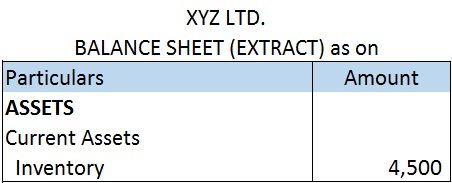Here I've prepared the Income & Expenditure A/c. Income & Expenditure A/c for the year ended 31st March 2021 Expenditure Amt Income Amt To Salary 4,80,000 By Subscriptions 9,00,000 To Rent 50,000 By Donations 10,000 To Stationery 20,000 To Loss on sale ofRead more
Here I’ve prepared the Income & Expenditure A/c.
Income & Expenditure A/c for the year ended 31st March 2021
| Expenditure | Amt | Income | Amt |
| To Salary | 4,80,000 | By Subscriptions | 9,00,000 |
| To Rent | 50,000 | By Donations | 10,000 |
| To Stationery | 20,000 | ||
| To Loss on sale of furniture (WN) | 10,000 | ||
| To Surplus | 3,50,000 | ||
| 9,10,000 | 9,10,000 |
Working Note: Calculation of Loss on sale of furniture
The following calculation is made to identify the loss incurred on the sale of furniture.
| Particulars | Amt |
| Book Value of Furniture | 40,000 |
| Less: Sale Value of Furniture | 30,000 |
| Loss on Sale of Furniture | 10,000 |
See less










IND AS 102: ‘Share-based payments’ in its actual text is considerably lengthy and very detailed. The objective of my answer is to provide a basic understanding of what IND AS 102 is all about. Further reading of the actual text is suggested for a more detailed understanding. IND AS 102 is the IndiaRead more
IND AS 102: ‘Share-based payments’ in its actual text is considerably lengthy and very detailed.
The objective of my answer is to provide a basic understanding of what IND AS 102 is all about. Further reading of the actual text is suggested for a more detailed understanding.
IND AS 102 is the India specific version of IFRS 2 which deals with the accounting of Share-based payments. IND AS 102 and IFRS are almost similar.
It deals with the financial reporting of the share-based payment transactions entered into by an enterprise in the following cases:
Share-based payments are of three types:
Example: A business acquires an asset for Rs. 1,00,000 and makes payment by the issue of its equity shares.
Example: A business acquires an asset for Rs. 1,00,000 and makes payment in amounts of case based upon its share price.
Things that are not under the scope of IND AS-102
Recognition
In a share-based transaction,
Measurement
The amount at a share-based transaction is to be recorded depending upon the type of counterparty:
I hope this is enough for a basic understanding of the IND AS 102.
See less